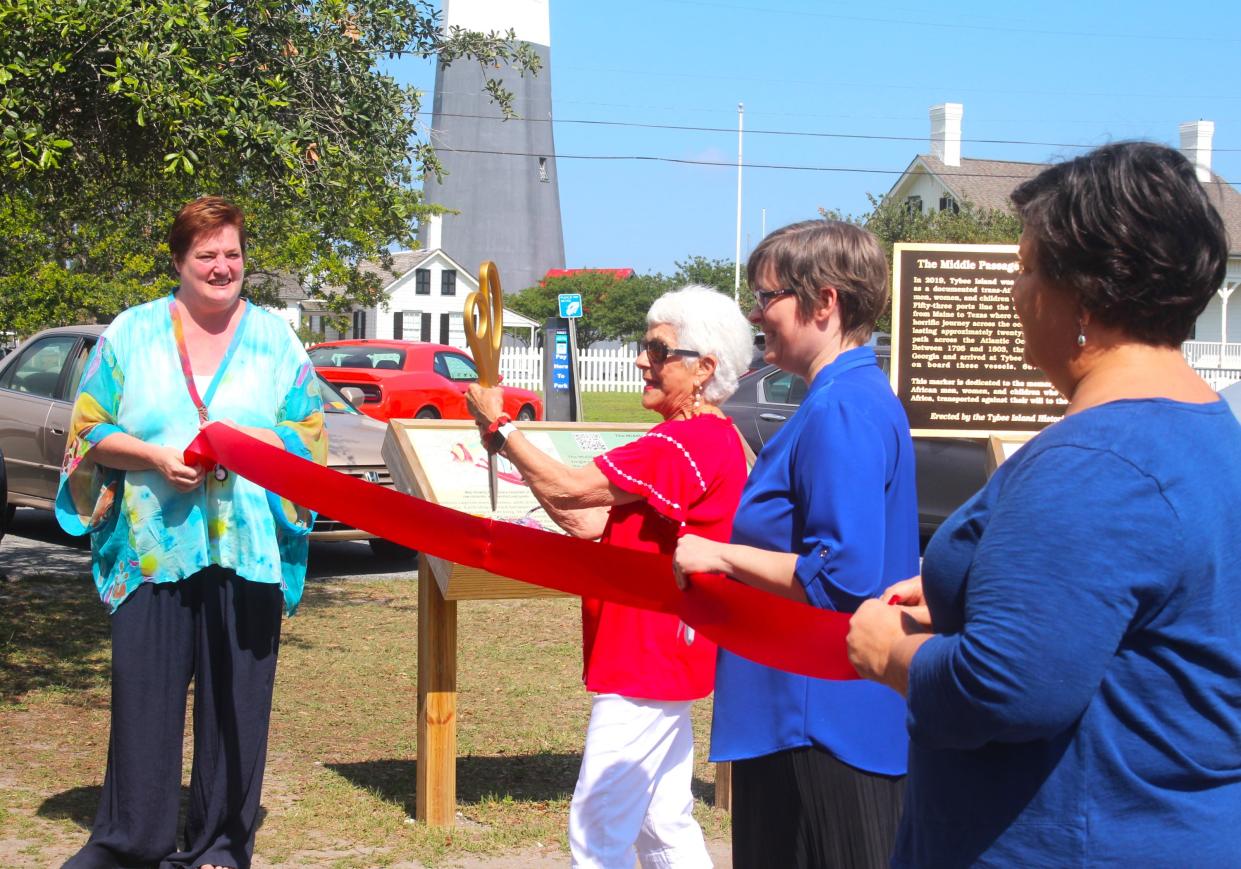A pathway to the past: Tybee Black History Trail dedicated

The ribbon was bright red and ceremonial, but its cutting on May 16 opened a virtual gateway to a historical trail.
The ribbon cutting was part of the dedication of the Tybee Black History Trail, a two-year collaboration between the Tybee Island Historical Society, Georgia Southern University and the Tybee MLK Human Rights Organization. The trail features 13 stops, with many more planned.
Georgia Southern's Amy Potter, a geography professor, described the excitement and satisfaction of doing archival research and oral histories to document places associated with Tybee’s Black population. Stops along the trail include the site of the Lazaretto Quarantine Station for captive slaves, the location of the 1960s beach wade-ins that were instrumental in the Civil Rights movement, and the addresses of successful Black businesses, churches, and residences.

Information about the trail is available digitally at TybeeLighthouse.org. A printed brochure chronicling the trail is i production.
More: Bravery of 11 students who participated in 1960 Tybee wade-ins commemorated with historic marker
What's along the trail?
The first location is the quarantine station, followed by stops at Walter “Contractor” Brown’s cement factory, the Alger Avenue neighborhood featuring Bertha’s Cottage, the Lil Litway Baptist Church, Johnny’s Place, and Viola Whatley’s residence.
There are stops at the Wade-In and Middle Passage panels and the Gilyard Cottage near the Lighthouse grounds, as well as the Brown family home, built alongside U.S. 80 despite resistance from Tybee's white residents who, in Jim Crow days, considered the location out of bounds.
There are stops at the James Adams Inn and Nightclub on the island's south end. Along Chatham Avenue there are stops at the stretch of maids’ cottages, the Adams Oyster House, and the homes of the fish camp.
The Black History Trail project is still developing. Soon there will be distinctive markers at each location.
More: Lazaretto Day returns to Tybee for second year for day of remembrance of enslaved past
Residents remember when ...
Tybee residents are rich repositories of memories. Allen Lewis described how Jack’s Cut behind Little Tybee, a favorite with kayakers, was dug and excavated by Black oysterman Jack Mungen. Will Strong described how the Black residents of Mooretown, the enclave near Solomon Avenue, were not allowed to tie-in to city water so had to dig their own well.
Lauren Clackum has pleasant girlhood memories of going with her father Joe Hutton when he taught Sunday school at “Bertha’s Church” after mass at his own St. Michael Catholic Church.
Evelyn Burke, who grew up on the south end and whose father and uncle ran the Riptide and Brass Rail bars, enjoyed morning walks with the family housekeeper, Viola Whatley. She was fascinated by the Gullah dialect that Viola would switch to when talking with all the local fishermen, many of whom had Daufuskie Island roots.
At a precocious age, Evelyn picked up on, and was disappointed with, the social codes and restrictions that were built into White-Black interaction. “It was a strange social dance, a charade. Ferris State University in Michigan has a very comprehensive Jim Crow Museum that tells about African-American resiliency. I saw plenty of that resiliency and dignity firsthand in many of the Black folks who I got to know and respect on Tybee.”
Editor's note: Anyone with more information or stories about Black families, life, entrepreneurship, and culture on Tybee can contact either Amy Potter ([email protected]) or Julia Pearce ([email protected]).
This article originally appeared on Savannah Morning News: Tybee Black History Trail dedicated with stops at quarantine station
